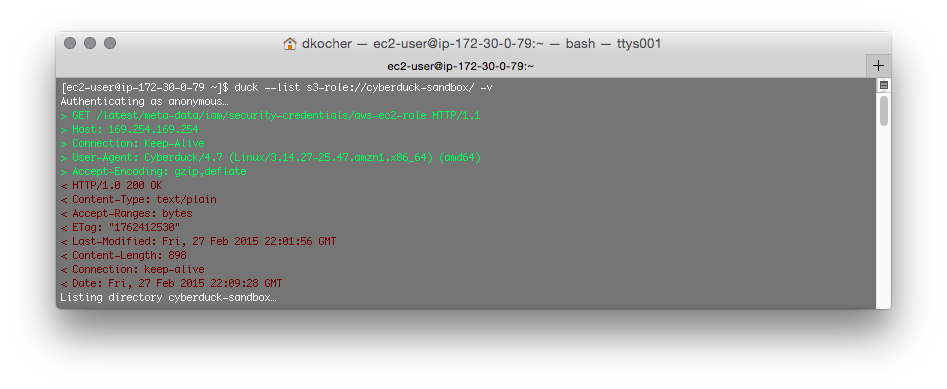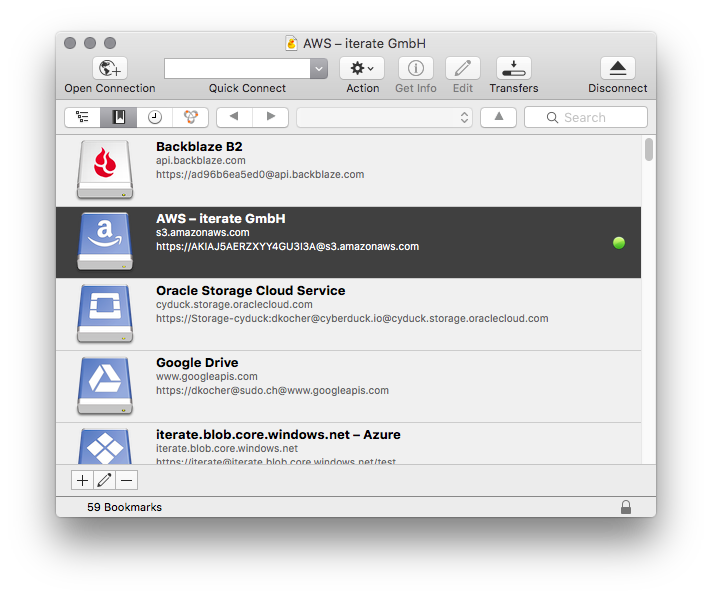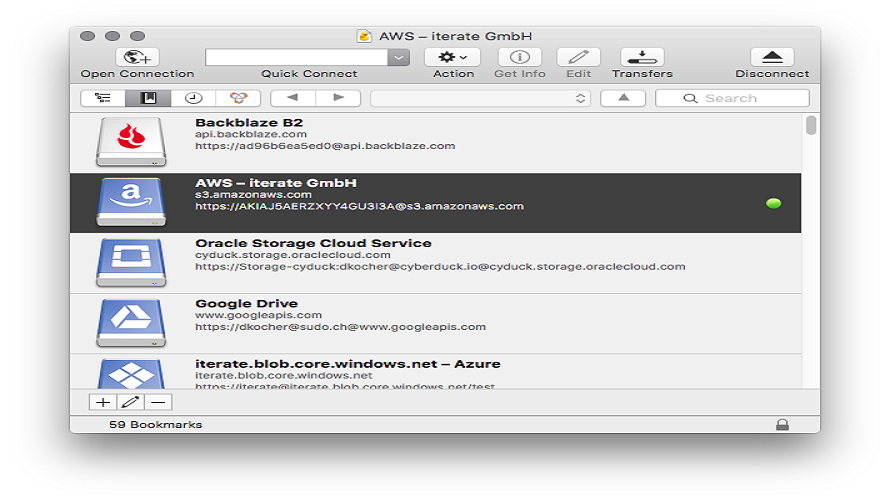

To do this through Cyberduck, update the permissions on the file using the instructions below.

It’s common to make a file, folder, or even an entire bucket publicly accessible so they can be accessed through the file’s URL without any additional authentication needed. The URL for the file is displayed here.Ĭlick on the URL to open it in a web browser or right click it and select Copy Link to copy the URL. Right click on the file, select Info, and navigate to the General tab. While you can always manually determine the URL (seeĪccess Buckets and Files through URLs), you can get this information quickly using Cyberduck. In most cases, URLs are used to share and display files. This includes the characters: : " ' & + =. Uploading or renaming objects using non-standard special characters and unusual ASCII/Unicode characters may cause issues. You can view the files stored within the buckets by clicking the chevron icon to the left of the bucket label or double clicking the bucket to open it. Once the connection is successful, a list appears of all the buckets that your access key has permissions to view within the selected data center. Otherwise, the access key must have permissions to read or read/write on the bucket you intend to use. If you intend to create new buckets, the access key must not be limited. If you do not yet have an access key, create one now by following the instructions within the This displays the connection dialog.Īt the top of the Open Connection dialog, click the dropdown menu and select the Linode Object Storage profile that corresponds with the data center you wish to use.Įnter your access key in the Access Key field and your secret key in the Secret Key field. Open Cyberduck and then select File > Open Connection… from the menu bar. Select the checkbox next to connection profile for each data center you wish to use with Object Storage.Ĭlose the Preferences window and restart Cyberduck to install the selected connection profiles. Search for “Linode” or scroll down to see the connection profiles designed for Linode’s Object Storage service. Navigate to the Profiles tab to open the Connection Profiles page.

Open Cyberduck and then select Cyberduck > Preferences from the menu bar. Some of the steps within this guide do not work properly on earlier versions. If you already have Cyberduck installed, be sure to update to version 8.2.1 or newer.


 0 kommentar(er)
0 kommentar(er)
